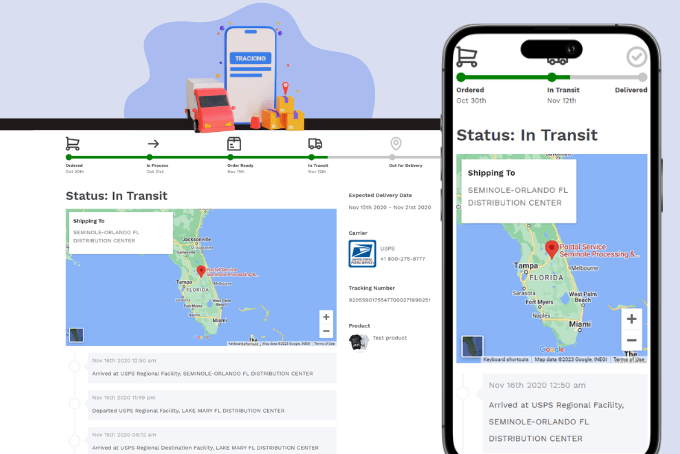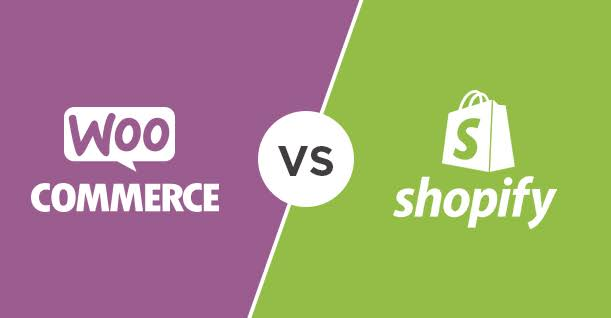
An e-commerce refund policy is a document that outlines the rules, regulations, and procedures governing the process of issuing monetary compensation for canceled orders or returned products. Online and brick-and-mortar shops require clearly defined refunds and returns policies to enhance customer post-purchase experiences, fostering customer trust and loyalty.
A clearly defined refunds and returns policy is crucial for maintaining smooth business operations since it boosts customer confidence and reduces friction when settling refund requests. Businesses without a refund or return policy usually have difficulty processing refunds and returns, which leads to huge losses due to restocking fees and inventory discrepancies.
By reading this article, you'll learn how to create a customer-centric refund policy and get a free refund policy template.
4 Types of Refunds
Full Refunds
A full refund is a type of refund that offers customers a 100% refund on the amount used to purchase a product. The returned funds are usually sent to the customer's original payment method, which can be a bank account, e-wallet, or PayPal account.
Non-Cash Refunds
As the name suggests, this type of refund offers non-monetary compensation in the form of goods equal in value to the amount spent on the original purchase, instead of cash. The most common non-cash refunds include vouchers, gift cards, and store credits.
This type of refund is mostly used by online retailers seeking to convert refunds into future business opportunities. Customers are expected to spend their non-cash refunds in the store to buy other goods.
Partial Refunds
A partial refund is a refund solution that entails returning a portion of the amount used to purchase a product instead of the whole amount. Partial refunds are usually issued because the store owner has used part of the payment in processing or delivering a product. This way, the customer and the merchant share costs in case of buyer remorse.
Sometimes, an online retailer may issue partial refunds in installments until the purchase amount is refunded. In other cases, customers may get a combined refund, meaning part of their refund will be in cash and part in-store credit.
No Refund
This type of refund means no refundable money or non-cash refunds will be issued to the customer. This scenario usually happens when a customer's refund application doesn't meet any criteria stipulated in the store's refund policy. This may be due to the nature of the item ordered, such as final sale items and custom products. In apparel stores, customers may get no refund if they order underwear or wash the clothes ordered.
9 Easy Steps to Create a Refund Policy
Creating refund policies can be a simple or complicated task, depending on the nature of your online business.
Here are some leads to help you:
1. Consider Local Laws on Refunds
Before crafting your store's refund and return policy, you should consider the refund laws in your business region.
If your online store operates in the US, you should familiarize yourself with the Federal Trade Commission (FTC) Act. The FTC is a goverment institution that enforces federal consumer protection laws to protect consumers against fraudulent and unfair business practices, and the law specifies who is eligible for refunds in certain circumstances.
If your store operates in the UK, you should familiarize yourself with the UK laws on returns and refunds. They are more straightforward than in the US. For example, UK laws stipulate that an online retailer does not have to refund if a customer knew the item was faulty at the time of purchase.
2. Use a Free Shopify Refund Policy Template
Shopify offers a free refund policy template to all online retailers on their platform. The return policy template makes crafting a professional return or refund policy easy. Merchants can customize the standard refund policy template to protect their stores against return fraud and win customer trust.
To get the free template, fill in your company information, and Shopify will email the template to you immediately. You may also download the refund policy template, copy the text, and customize it further.
3. Conduct Competitive Research
Using other store's refund policies as a reference is completely acceptable. This means that you can look at the return and refund policies of your competitors and other popular online shops.
When crafting your store's refund policy by using other policies as references, take note of the language used and the eligibility rules set for different products.
Bear in mind that each store is different, and you should provide something that allows you to stand out from your competitors. Ensure the policy you craft is specific to your products.
4. Specify Refund Eligibility
Refund eligibility rules are some of the main things a customer will look for when reading your return and refund policy. Customers are concerned about the conditions under which they qualify for full refunds and when they are entitled to partial refunds. They may, therefore, not read through the entire policy; instead, they will prefer the refund eligibility rules section. For this reason, you should clearly state the eligibility rules.
In addition to eligibility rules, you should identify items eligible for returns and make sure to exclude final sales items. If you don't specify, your customers will assume all your products are returnable.
Therefore, it's recommended to clearly state which products from your inventory cannot be returned, refunded, or exchanged for other products, such as perishable and custom products.
5. Clarify the Refund Procedure
You should describe the step-by-step process of initiating returns by customers. In this section, you should include how the customer can contact you, whether by email, chat, or a return portal. Your customers need to have an answer to the question, "How to request a refund?"
Additionally, your customers should know the procedures you take when dealing with refund applications. Therefore, your refund policy should clearly state the steps involved in issuing refunds.
6. Be Transparent About Refundable Money
Customers value transparency, more so when it comes to their money. For this reason, your refund policy should also stipulate what type of refund you offer to customers. Different stores offer different refund options. You should explain your methods to issue refunds and how customers can get their money back, exchange products, or receive store credit.
Moreover, for cash refunds, your refund policy should stipulate the different ways they can expect to get their refunds. Your refund policy should be able to answer questions such as "Can money be refunded to the original payment method?" and "Can money be refunded to a gift card?"
7. Define Refund Processing Time
A good refund and return policy needs to have a clearly defined timeframe for accepting returns and processing refunds. This timeframe will reassure your customers that they will get their money back within the expected period. Thus, make sure your refund policy can answer the question, "How long does a refund take to process?"
The timeframe will depend on what works best for your business. Typically, most online retailers specify that 3 - 10 business days are needed to complete refund processing upon successful return and approval for refund. It would help if you also gave customers an estimate of how long it will be before the refund hits their accounts.
8. Offer Refund Status Updates
Avoid keeping refund information and progress status within internal systems - keep the customer in the loop. Be upfront about refund progress by providing regular updates to your customers and informing them of the next steps in processing their refunds. This practice is beneficial for fostering customer trust and loyalty to your brand.
9. Keep Your Refund Policy Up-to-date
You should regularly update your refund policy to ensure it works with your latest products and reverse supply chain operations. If you add a new product to your store, ensure it is covered in your refund policy. Also, be observant of customer behaviors and new return scams.
Refund Policy Template for Shopify Stores
REFUNDS AND RETURNSWe are committed to providing you with the best shopping experience. If you are unsatisfied with your purchase, we're here to help.
30-Day Return Policy We give our clients up to 30 days to request a return or refund for their purchase. Remember the due date counts from the date of delivery. For a successful return, the purchased item must be in the same condition as dispatched from our store in the original packaging, unworn or unused, and with tags intact. You must also provide a receipt or proof of purchase.
How to Initiate a Return To initiate a return, please email us at [your email address] with your order number and the items you wish to return. Once your return is approved, you can proceed with the following steps:
Return Exceptions You must understand that certain items, including foodstuffs, flowers, plants, and other perishables, cannot be returned. Other items in the list include custom orders or individualized goods (such as beauty products), hazardous materials, flammable liquids, or gases. We also won't accept returns for final sale items or gift cards.
Damaged or Defective Items Ensure you inspect your order upon receipt. If your delivered item is defective, damaged, or incorrect, contact our customer service lines immediately so we can address the issue and make it right.
Exchanges If you wish to exchange an item, the fastest way to ensure you get what you want is to return the item you have and place a new order for the desired item.
European Union 14-Day Cooling Off Period If your merchandise is being shipped to the European Union, you can cancel or return your order within 14 days for any reason and without justification. The conditions apply regarding the condition of the item, proof of purchase, and original packaging.
Refund Process Once your return is received, we will inspect it and send notifications of rejection or approval of the refund. We will process the refund based on the earlier agreed payment method in about 10 business days if approved. However, having your bank or credit card company successfully process the refund may take time. We also offer non-cash refunds for specific product categories; please check the product details at checkout for more information.
Contact Us If you are unsure about any aspects or need further clarification about your return or refund, please contact us at [your contact information].
Customization Please note that this refund policy template can be customized to align with your store's specific policies and regulations on returns and refunds. |
Enforce Your Refund Policy with ParcelPanel
The ParcelPanel Returns & Exchanges app is one of Shopify's leading returns management apps. The app aims to provide online retailers with a hassle-free way to implement refund and return policies in their stores.
The app automatically creates a return page for you and your customers upon installation. With it, you can make your returns and refunds policy visible to your customers by adding a link on the return page. And with the app's multi-language capabilities, you can be sure all your customers can easily follow the steps to submit requests for refunds or exchanges.
ParcelPanel allows merchants to set up eligibility rules, restocking fees, and define the return window. Once the return window is defined and an order exceeds the time limit, the app automatically prevents request submissions on that particular product from that particular shopper.
With ParcelPanel, you can be transparent about a product's refundable amount, as it can be displayed to the customer before they submit a request. ParcelPanel also provides real-time refund tracking by regularly updating the customer on the status of their refunds by email.
Install ParcelPanel in your Shopify store for free and give your customers peace of mind regarding returns and refunds.












![Top 10 Route Alternatives & Competitors [2026]](https://blog.parcelpanel.com/wp-content/uploads/2025/11/Route-Altenatives.png)
![Top 10 parcelLab Alternatives & Competitors [2026]](https://blog.parcelpanel.com/wp-content/uploads/2025/11/AfterShip-Altenatives-9.png)
![Top 7 Post-Purchase Experience Platforms [2026]](https://blog.parcelpanel.com/wp-content/uploads/2025/11/AfterShip-Altenatives-7.png)
















